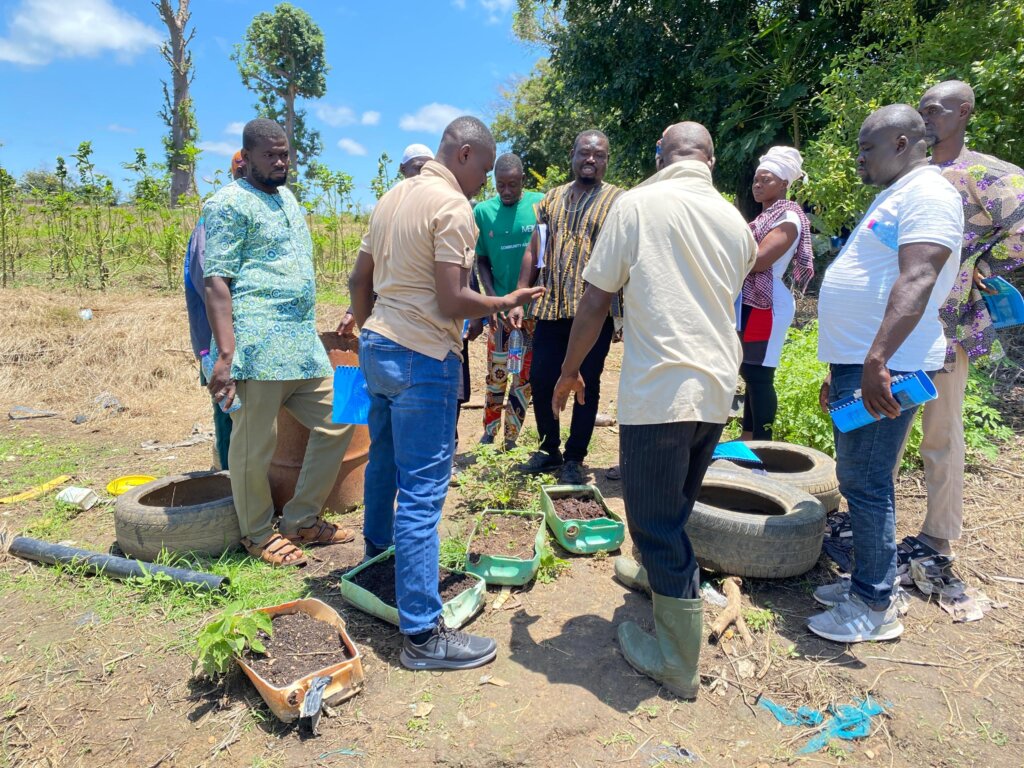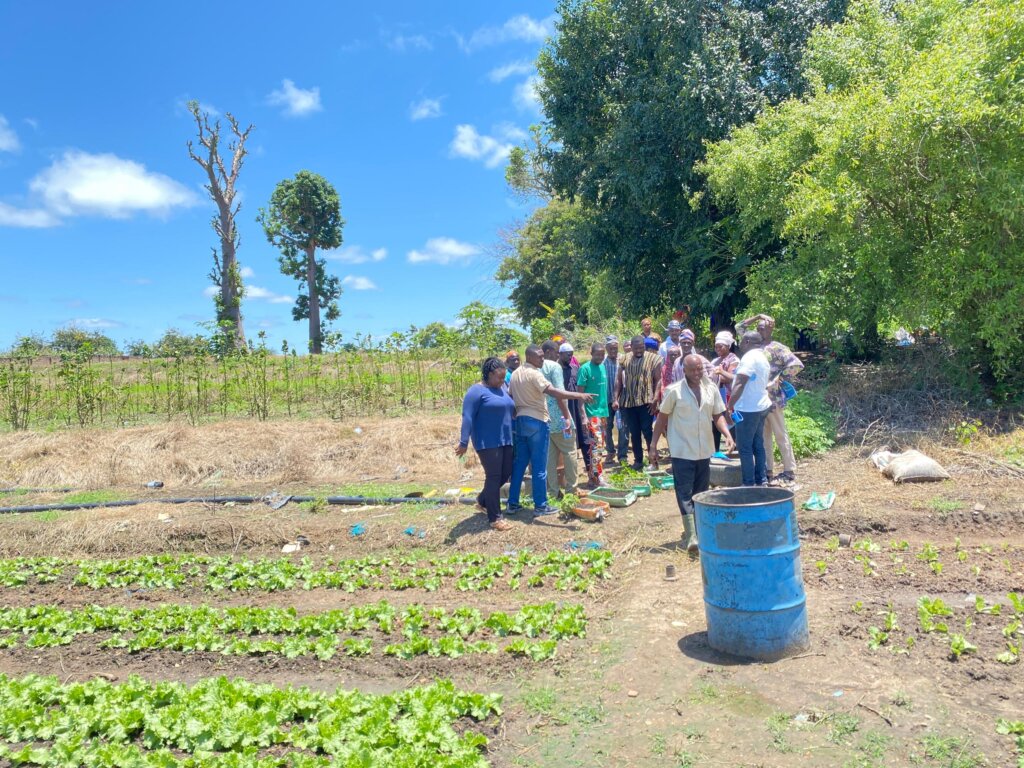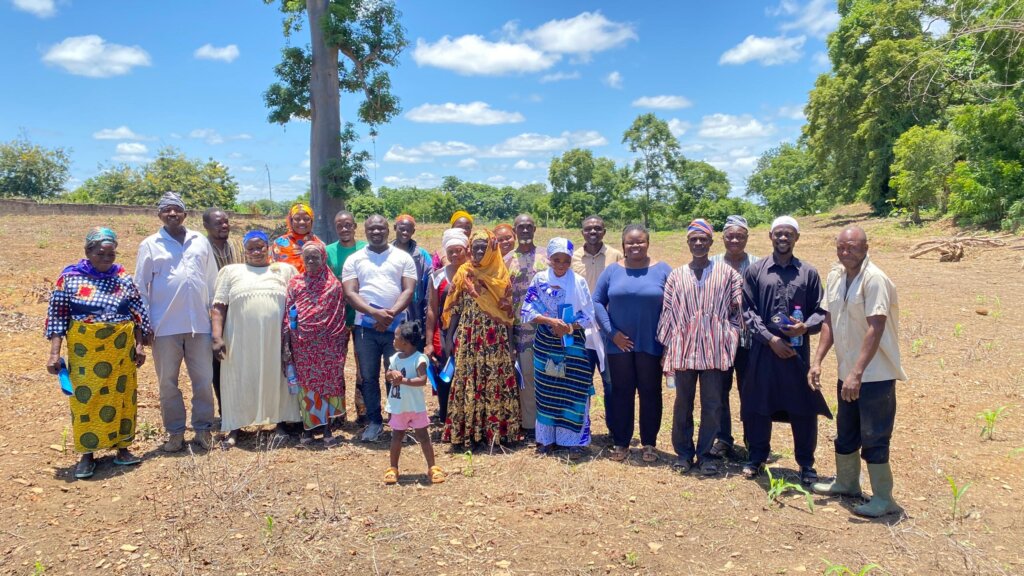Central Gonja, Ghana – In Ghana’s Northern Savannah, where climate vulnerability is felt in the soil itself, farmers are finding new strategies to adapt, resist, and thrive. On August 23, 2025, FIDEP Foundation, as part of the EU-funded CIRAWA Project, convened smallholders in Central Gonja for a training of trainers on co-creating agroecological pathways towards climate resilience.
This was more than a workshop integrated the lived-experiences of farmers as a core ingredient of the co-creation model, where science, tradition and farmers’ experience are connected to reimagine sustainable farming futures.
What we did
The activity brought together 22 selected farmers, including women and youth farmers, in a setting that encouraged both practice and dialogue. Trainers demonstrated composting techniques, including layering farmyard manure, crop residues, and household waste while carefully managing moisture and aeration. Farmers experimented with crop residue management (CRM), observing how mulching depth, residue type, and timing influence nutrient cycling. Alongside soil restoration, the team introduced intercropping and agroforestry models. Using a simple matrix, farmers compared species for fire control, windbreaking, and soil stabilization. They contrasted the fragility of monoculture with the resilience of intercropped systems, where legumes and cereals reinforce each other’s nutrient cycles. The practical demonstrations on composting techniques turned abstract knowledge into action steps for building resilience on a farm plot.
A third module generated curiosity by showing how agricultural waste could fuel not only soils but also energy. Farmers learned to build low-cost biochar, converting residues into stable carbon that enriches soils while locking away emissions. Field discussions included the economic trade-offs of biochar production where farmers saw how input-output balances could tilt in their favor.
Finally, a session on ecological pest management revived community memory of early planting, field sanitation, and habitat protection. Farmers shared knowledge of natural pest repellents, experimenting with biopesticides and intercropping arrangements. Group discussions evolved into commitments for collective monitoring, signaling a shift from individual struggle to shared learning and joint action.

Why this matters
At this stage, inaction is the biggest risk. Ghana’s savannah soils are thinning under the combined stress of fertilizer dependency, erratic rainfall, and overexploitation. For smallholders, who form the backbone of national food systems, input costs are rising while harvests remain unstable. Compost, biochar, and agroforestry offer more than green alternatives. They are economic tools. Compost heaps cost almost nothing yet build soil that retains water; intercropped fields yield more per unit of input while spreading climate risk; biochar creates long-term fertility and can serve as a community energy source.
For women farmers in particular, these practices cut dependence on costly chemical inputs and reduce vulnerability to market shocks. The training proved that sustainable farming is not an abstract policy idea but a set of tools that farmers can build with their own hands.
From farmers’ lived experiences to co-creation
The training was as much about listening as it was about teaching. Farmers spoke openly about their struggles with declining soil fertility, unpredictable rainfall, and crop pests. Some had already experimented with planting trees to shield their farms or using household ash to condition soils. By blending these insights with structured modules on composting, intercropping, and biochar, the session turned farmer testimonies into co-created strategies.
This exchange of knowledge created space for innovation based in trust. Farmers realized that their practices were not “behind” but rather aligned with scientific principles. Trainers, in turn, adapted methods to fit cultural and ecological realities. The result was a shared sense of ownership: solutions were not imposed but co-created with farmer’s lived-experiences as the central component.

From practice to resilience and livelihoods
The practical modules shifted the narrative of resilience from policy jargon to household experience. Farmers saw how composting reduces fertilizer expenses, how intercropping cushions against drought and pests, and how biochar adds long-term stability to soils. Ecological pest management rekindled cultural confidence, reviving traditions that had been sidelined by dependency on synthetic inputs.
Resilience, in this sense, is not abstract. It is the ability of a farmer in Central Gonja to look at her soil and see promise rather than loss; it is a youth cooperative realizing that waste can power both energy and food security; it is a community finding strength in collective pest monitoring and shared decision-making. Each practice becomes a livelihood anchor.
Looking ahead
The training is only the beginning. FIDEP Foundation and CIRAWA are rolling out step-down trainings where farmer-trainers will replicate modules in their communities. District-level extension officers will support youth farmers, schools and women-led farmer groups across climate-vulnerable districts in Northern Ghana, broadening the reach.
In addition, site-level changes crop performance, farmer observations and yield changes, will be continually tracked and shared through the Landfiles mobile application. This platform will allow farmers to document and share their farm plot transformations, creating a living evidence base that links household practices to policy debates. Plans are also underway to bring agroecology into schools, ensuring that the next generation learns resilience not only in textbooks but in the field.
What begins as compost, a mulch layer, or a simple biochar kiln can grow into a movement of resilience and renewal. Agro-waste can become wealth for farmers. Local traditions can inform innovations and farmers are becoming the architects of our sustainable future.
